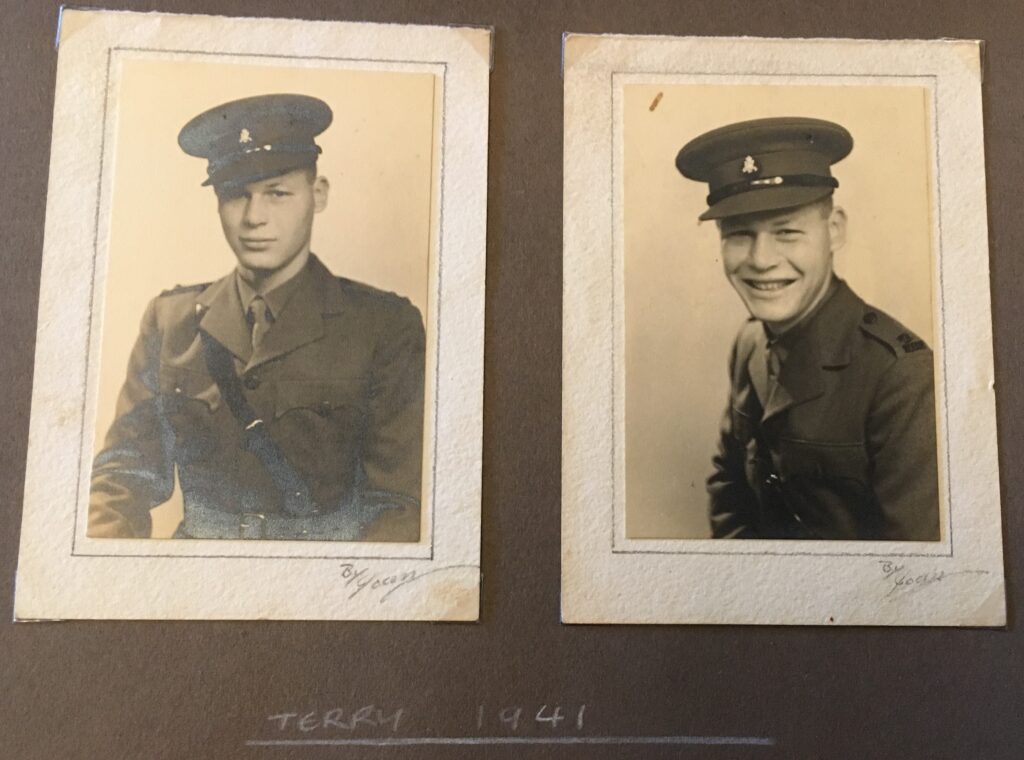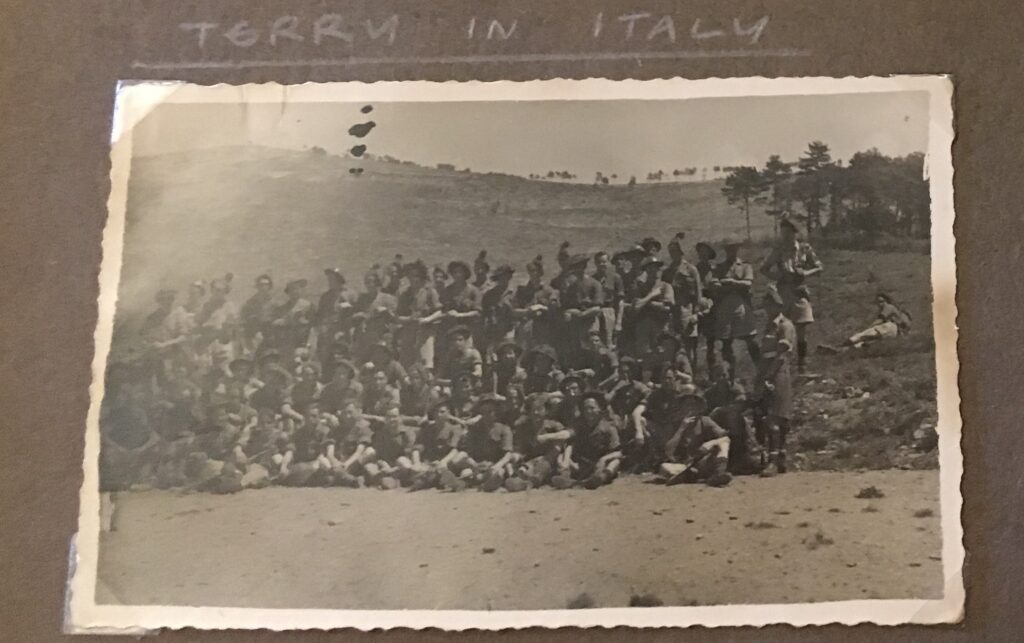Home » Regimental History
Category Archives: Regimental History
Major-General Sir Sebastian John Lechmere Roberts KCVO OBE.
The funeral mass for Major General Sir Sebastian Roberts – the former colonel of the Irish Guards and Honorary Colonel of the London Irish Rifles who died aged 69 on 9 March — was held at the London Oratory on 13 April.
More than 1,000 mourners, including many retired Guardsmen, attended the event.
HM King Charles III was represented by General Sir Mark Carleton-Smith, former Chief of the General Staff. His Serene Highness Prince Josef-Emmanuel represented the Grand Duke of Luxembourg. HRH The Prince of Wales, the Irish Guards’ former Honorary Colonel, was represented by Major James Lowther-Pinkerton, Prince George’s godfather. The Princess of Wales is the regiment’s present Honorary Colonel. Major General Christopher Ghika, a retired Irish Guards’ officer, represented Her Royal Highness The Princess Royal.
The mass was celebrated by Father Ambrose Henley, Dean of Ampleforth Monastery, who also delivered the Homily.
Sir Sebastian were carried into The London Oratory by eight Irish Guardsmen led by a Guards officer. The opening hymn was “O Lord, my God, when I in awesome wonder”. The London Oratory choir sang the Kyrie from Missa Pro Defunctis by Giovanni Anerio. The first reading, from the Prophet Isaiah, was delivered by Julian Roberts, Sir Sebastian’s eldest son and a retired Irish Guards officer. The second reading, from St Paul’s letters to the Romans, was read by his second son Orlando, also a retired Irish Guards officer.
The readings were followed by the choir singing Pie Jesu from Gabriel Faure’s Requiem Mass. The gospel reading was from John Chapter 14: “I am the way, the truth and the life.” Salve Regina was sung during the offertory. Sanctus from Faure’s Requiem was also sung. During communion, the choir sang the Faure’s Agnus Dei followed by Ave Verum Corpus by Mozart.
After communion, the eulogy was delivered by Lucian Roberts, one of Sir Sebastian’s brothers who recalled his ebullient character and love of “dressing up” and painting. The final reading was delivered by Anthea Roberts, Sir Sebastian’s sister.
The last hymn was “Tell out my soul.” During the absolution at the end of the mass, the choir sang In Paradisium by Faure.
Sir Sebastian was piped out of the church with Saint Patrick’s Day, the Irish Guards’ regimental quick march.
The funeral mass was followed by a reception for mourners at St Winifred’s Hall next to the London Oratory.
Sebastian Roberts was born in Aldershot on 7 January 1954. He was the eldest of the 10 children of the late Brigadier John Roberts, former commanding officer of the 2nd battalion of the Welsh Guards and the Parachute Regiment, and his wife, the late Nicola (nee Macaskie) Roberts. Sir Sebastian went to school at Ampleforth College when Basil (later Cardinal) Hume was Abbot. Contemporaries remember him as “a theatrical figure, highly articulate and entertaining”, characteristics that Sir Sebastian was display throughout his life.
Sir Sebastian studied modern history at Balliol College Oxford and was commissioned into The Irish Guards in 1977.
In 2003, Sir Sebastian was appointed General Officer Commanding London District and Major General of the Household Division. On relinquishing the command in 2007, he was knighted and elevated to the Colonelcy of the Irish Guards in 2008. Sir Sebastian held the position until he handed it over in 2011 to the Duke of Cambridge, now The Prince of Wales, after leaving regular service the previous year.
He wrote the British Army’s doctrine of the Moral Component “Soldiering: The Military Covenant” and was also a broadcaster in demand during the HM the late Queen Elizabeth’s funeral in 2022.
Sir Sebastian married Elizabeth Muir, daughter of a former commanding officer of the Queen’s Dragoon Guards, who survives him along with their sons, Julian and Orlando, and daughters Cosima and Flavia.
Sir Sebastian was originally diagnosed with Marfan Syndrome when he was nine. The next time Marfan Syndrome was mentioned was in 1976, when he applied to join the Army. The retired Medical Corps Major General who headed the Medical Board at the British Military Hospital at Millbank was intrigued by his height, high palate, long fingers and bumpy chest. When Sir Sebastian asked if Marfan presented any problem, he said “only for your tailor, my boy,” and pronounced him fit to serve.
Sir Sebastian was first referred to London’s St George’s Hospital with his son and daughter in the early 1990s. “We learned a great deal that day: much more was known about the syndrome,” Sir Sebastian said in an interview published by St George’s Institute of Aortic Aneurysm & Aortic Valve Disease. “(W)e heard for the first time about the most serious eventualities: detached retinas and aortic aneurysms; but mercifully we were fortunate as a family: our symptoms were slight and gave no cause for concern.”
After Sir Sebastian was appointed to the UN force in Sierra Leone in 2001, a chest X-ray that was part of the UN medical, suggested something was wrong with his aorta. Further tests revealed a serious aneurysm.
“Within days I was given a new valve, and a few years later, a new aortic arch: in effect, a new lifespan, all owed to the professionalism, care and humanity of the people of St George’s, and the wider NHS,” Sir Sebastian said.
His family has asked for any donations in Sir Sebastian’s memory to be made to The Marfan Trust and The Irish Guards Charity.
Major-General Sir Sebastian John Lechmere Roberts KCVO OBE. Born 7 January 1954. Died 9 March 2023.
The London Regiment in Iraq
We have received a set of very evocative photographs from 2014 during the deployment of members of the London Regiment to Iraq. They show Messines Company carrying out their duties in the southern sector of Iraq near Basra and Kuwait and have been kindly passed over to us by Geraint “Taff” Hughes, who has been a stalwart member of the London Irish Rifles for many years.
We would like to pay tribute to all the men and women who served in Iraq over many years and would particularly like to thank Taff Hughes for sharing some of the memories from his time in the country.
Quis Separabit.
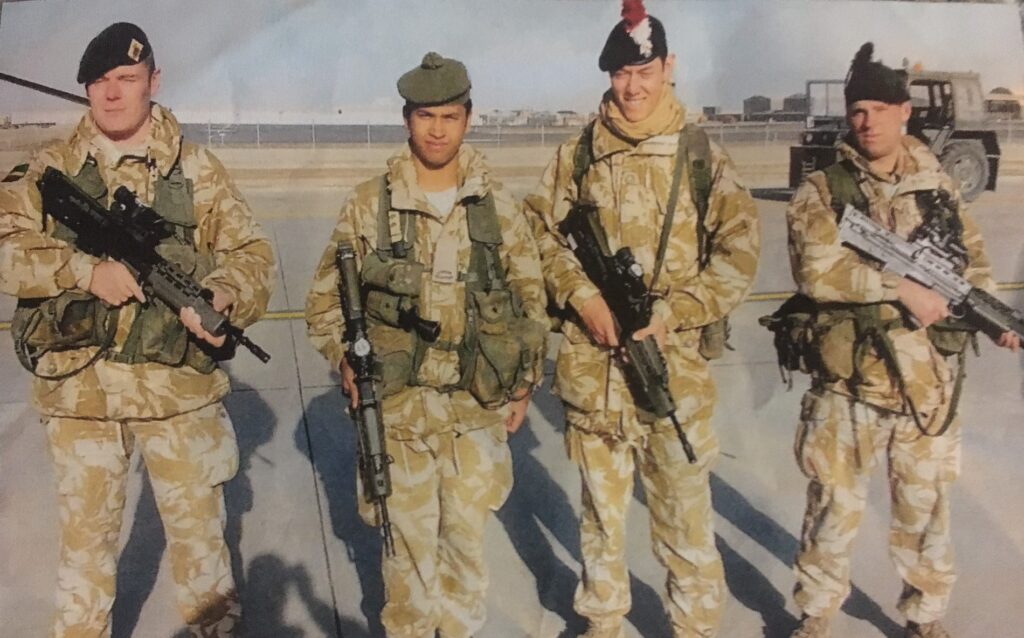
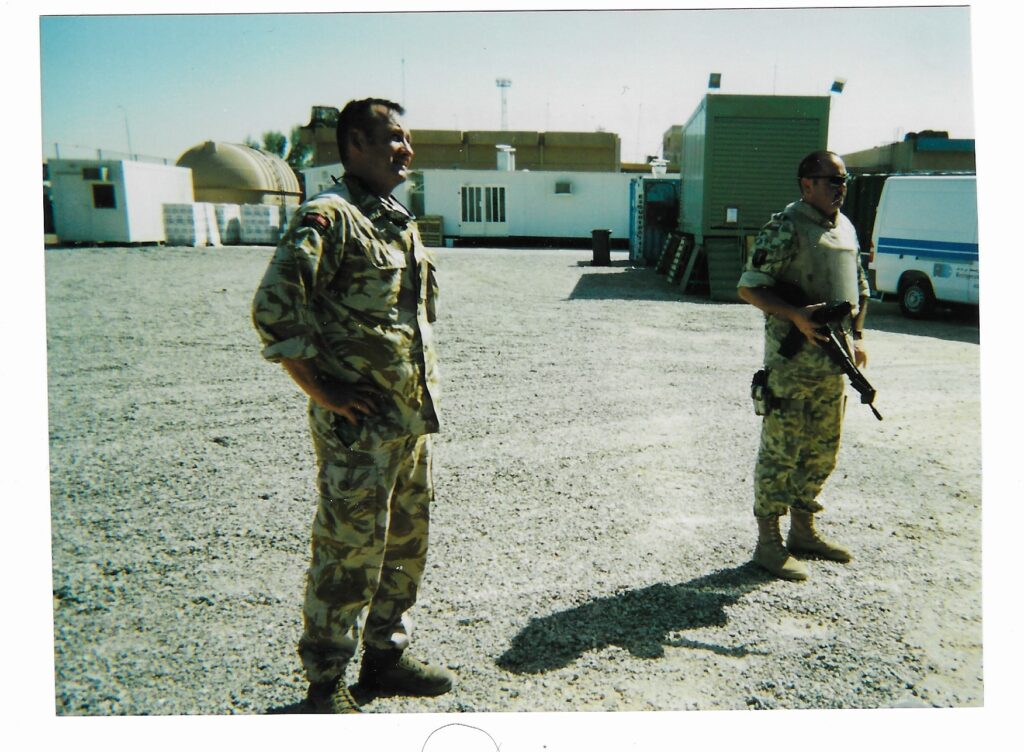
Umm Qasr – August 2004. 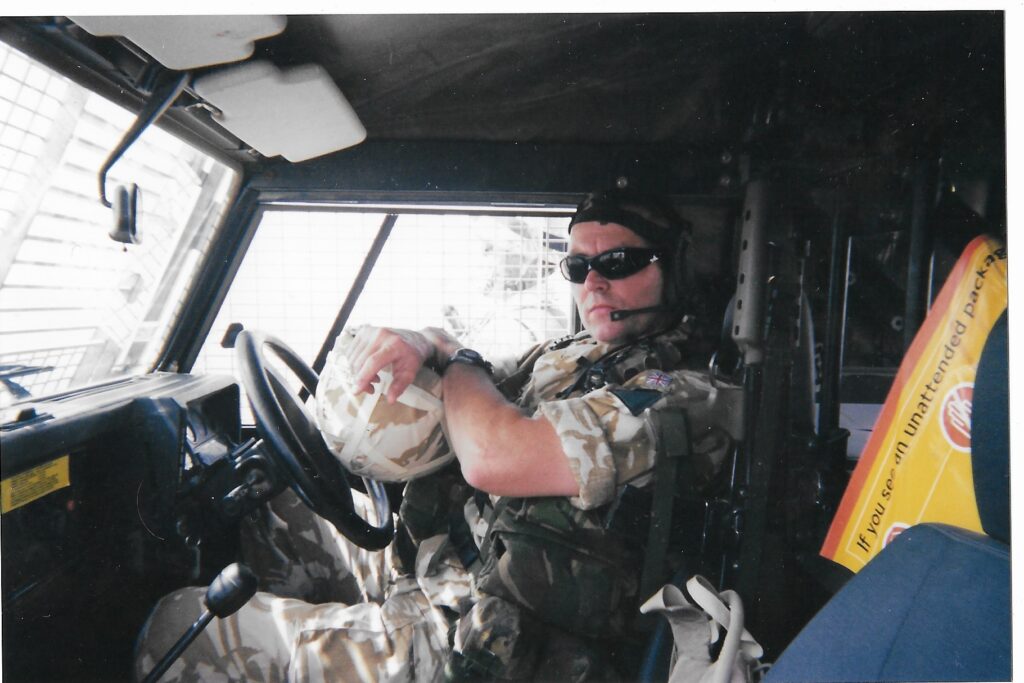
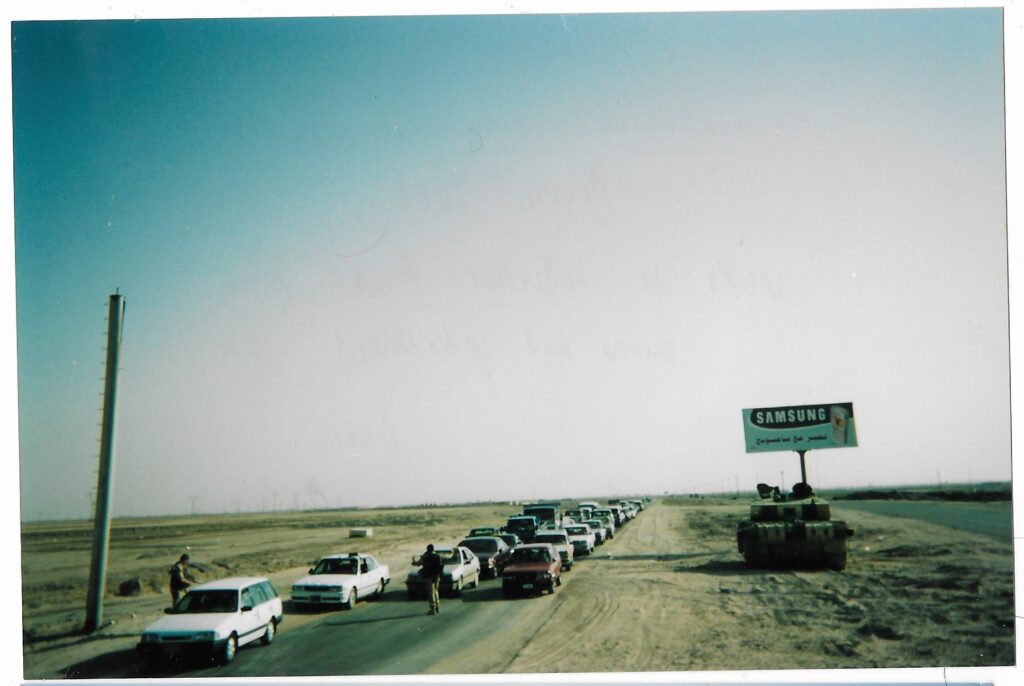
Operation Centurion – August 2004. 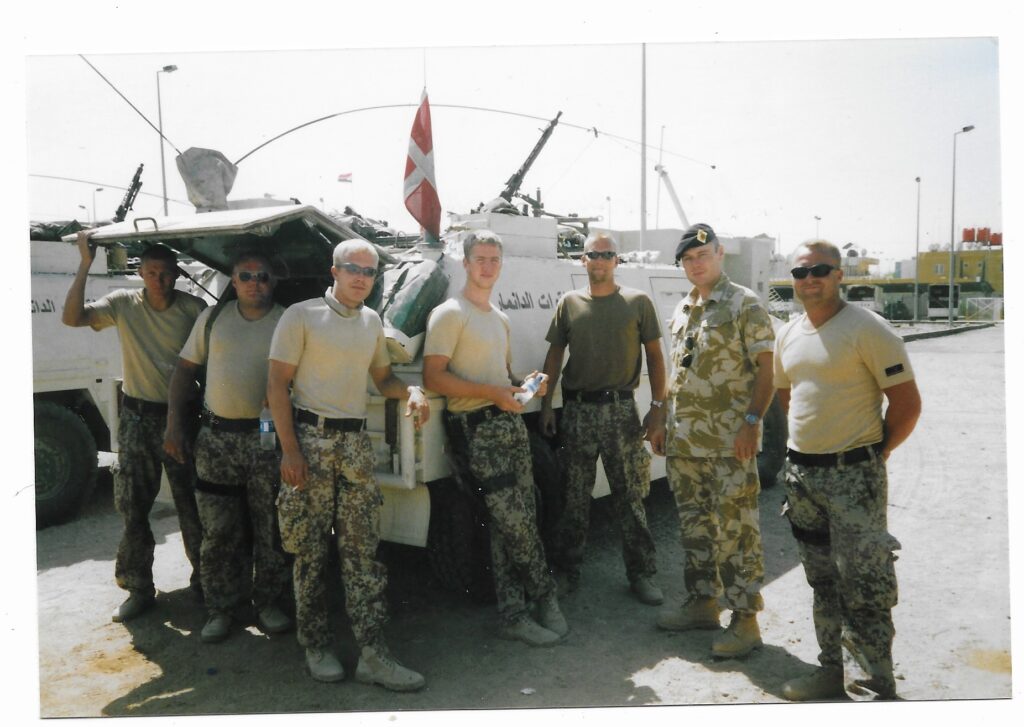
C4 Platton, Messines Company and UANBAT troops in Basra, – September 2004. 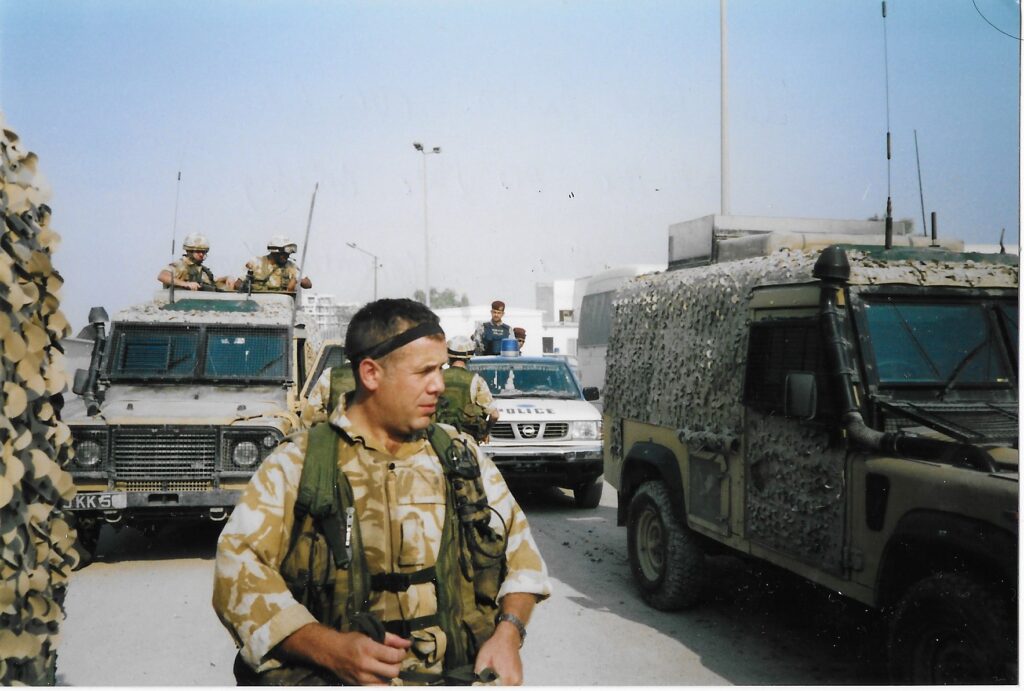
State Building, Basra – September 2004. 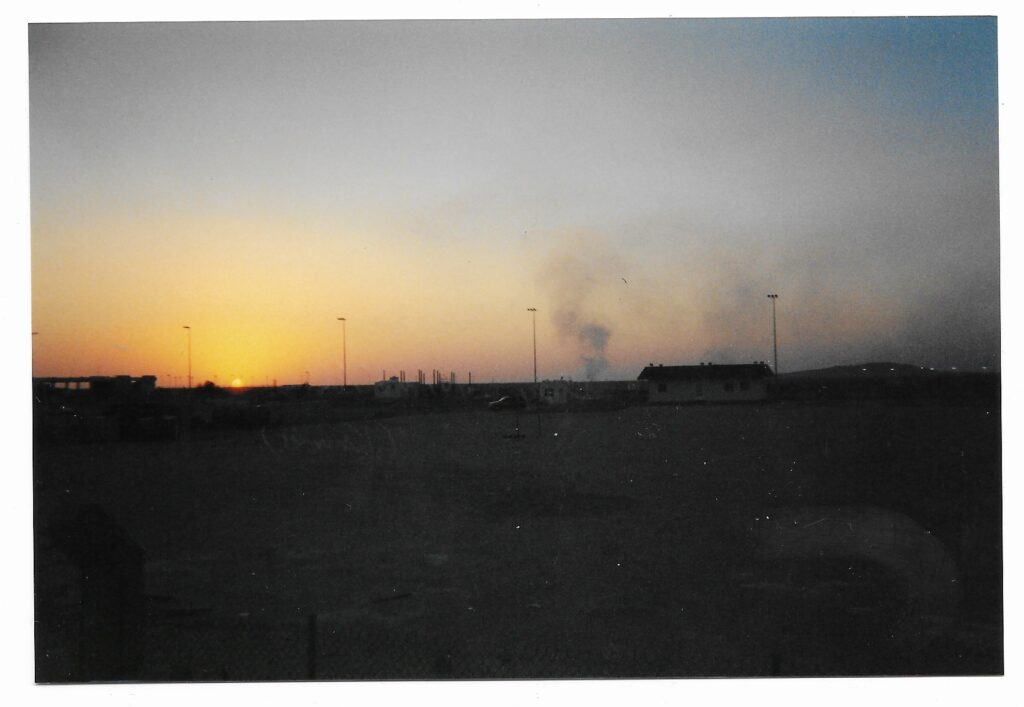
Camp Naustar – September 2004. 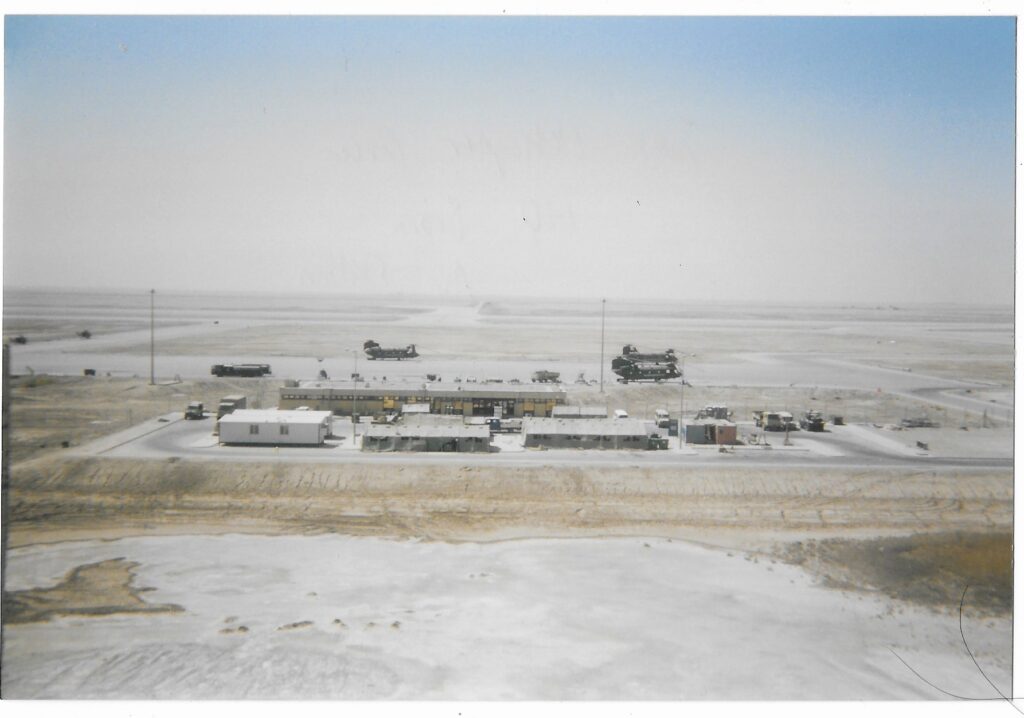
Joint Helicopter Force, HQ Basra Air Station. 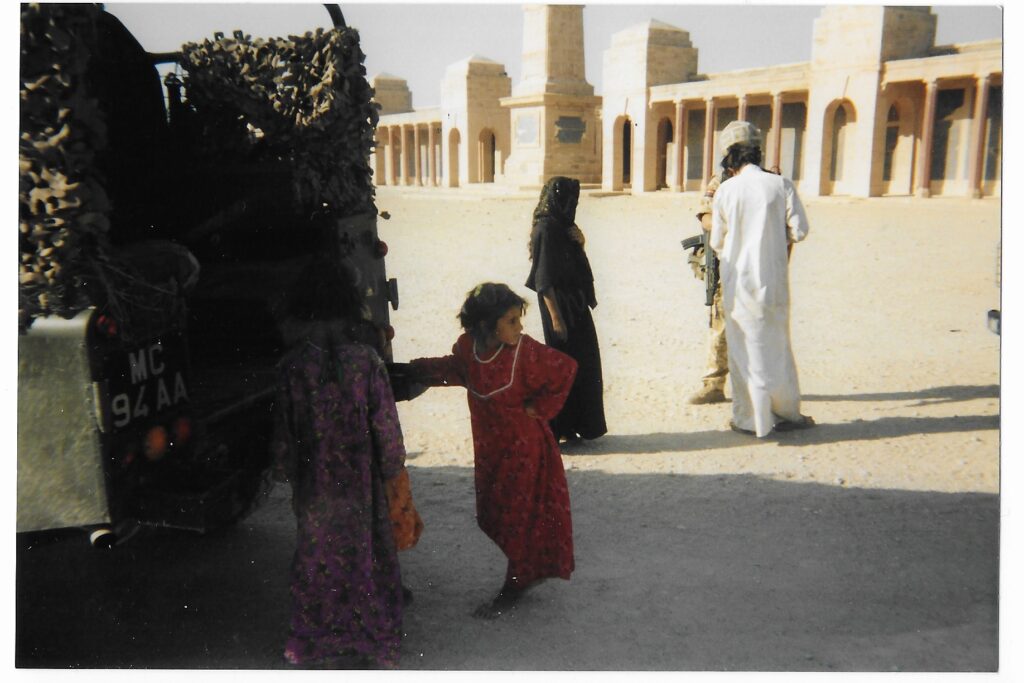
Visiting the First World War Memorial in Basra – September 2004. 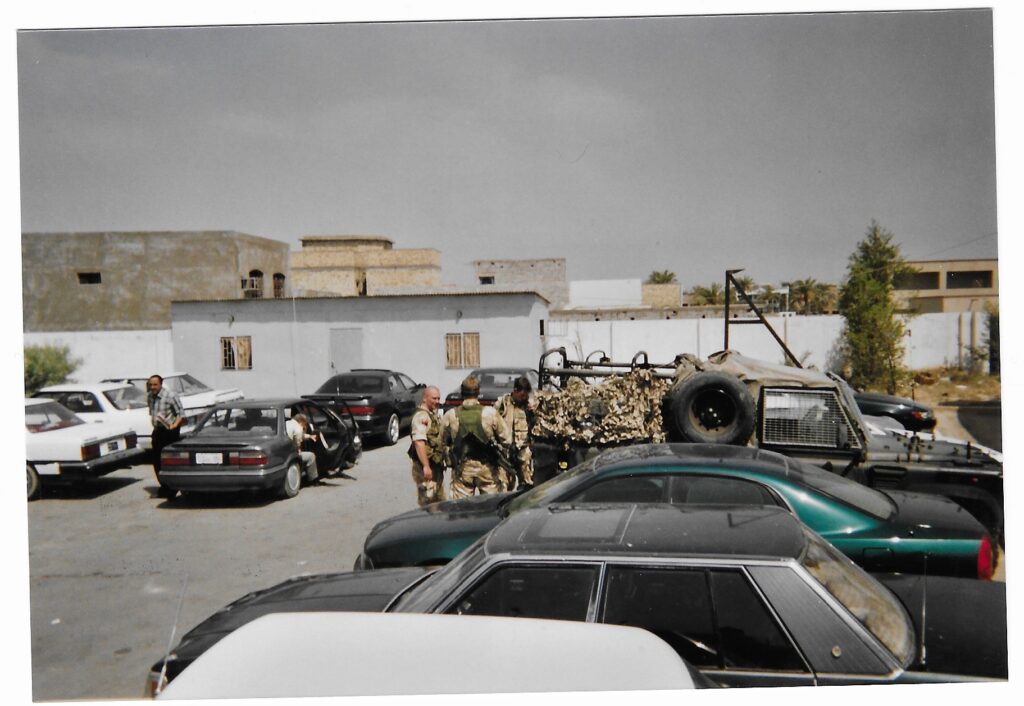
4 Platoon, Tactical Support Unit of Iraqi Police HQ. 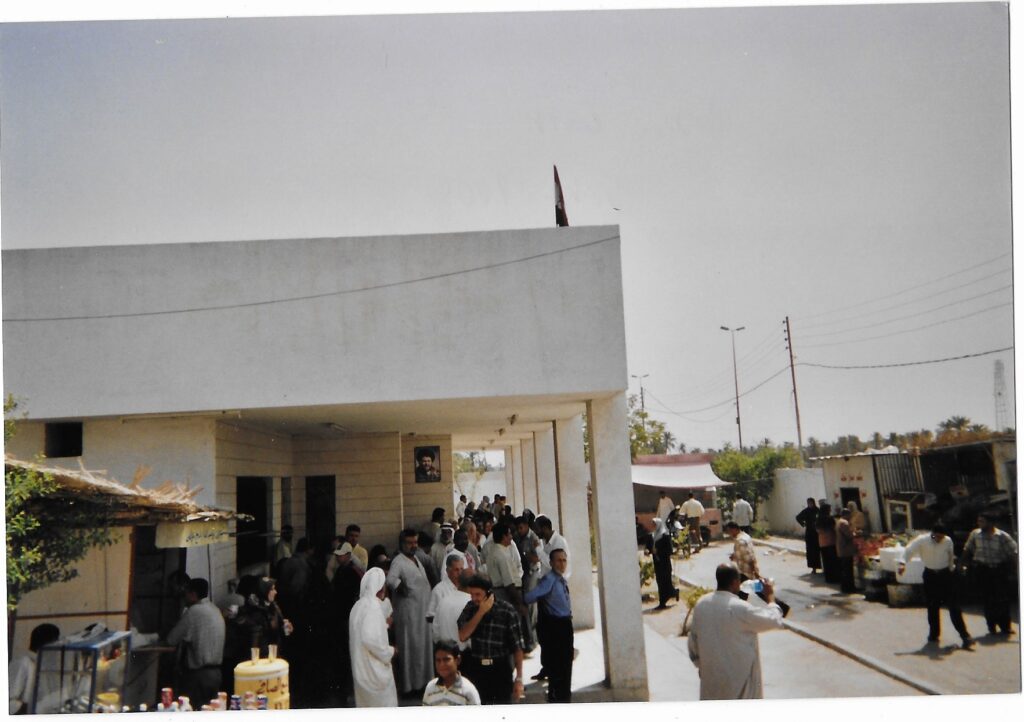
Basra – July 2004. 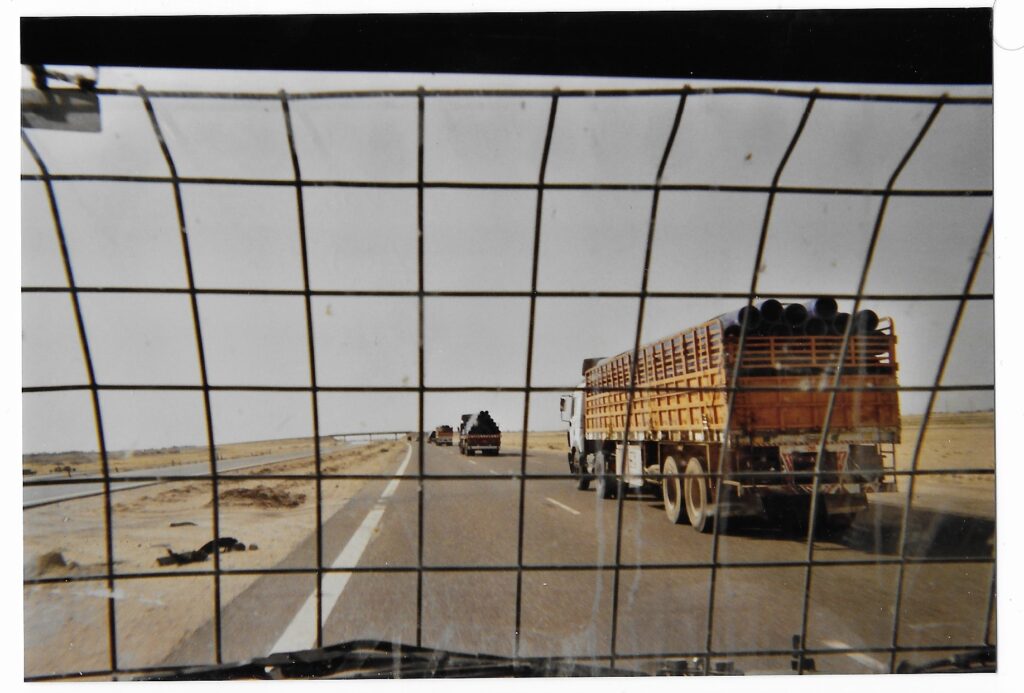
Convoy carrying water pipeline to Basra Air Station. 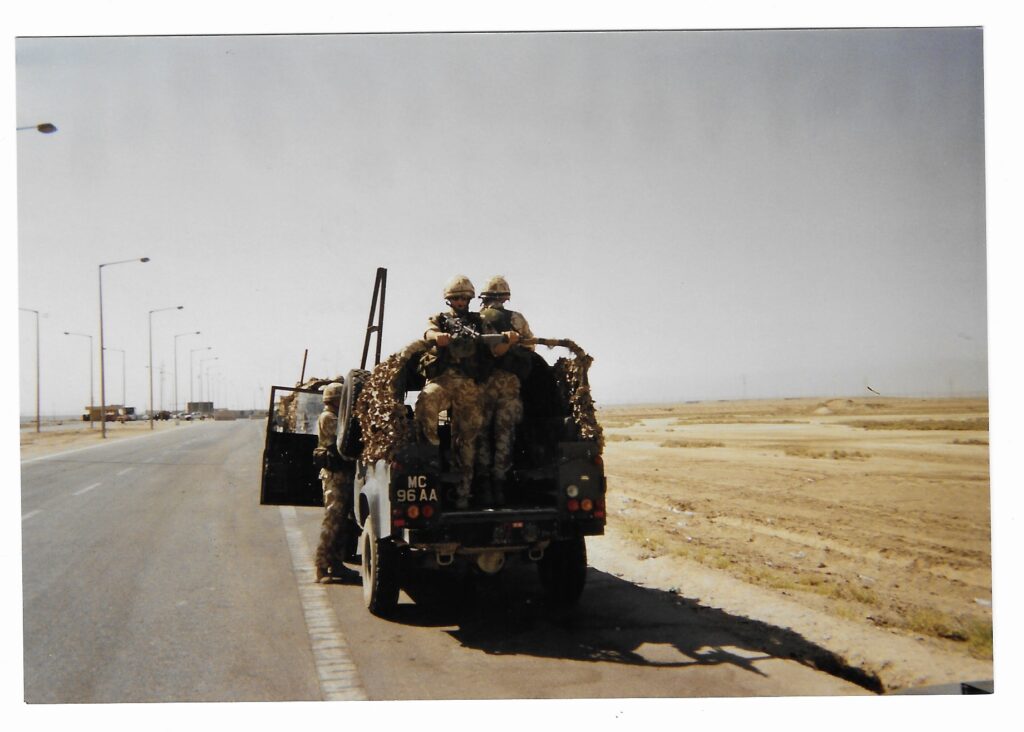
4 Platoon, Messines Company departing Basra Air Station. 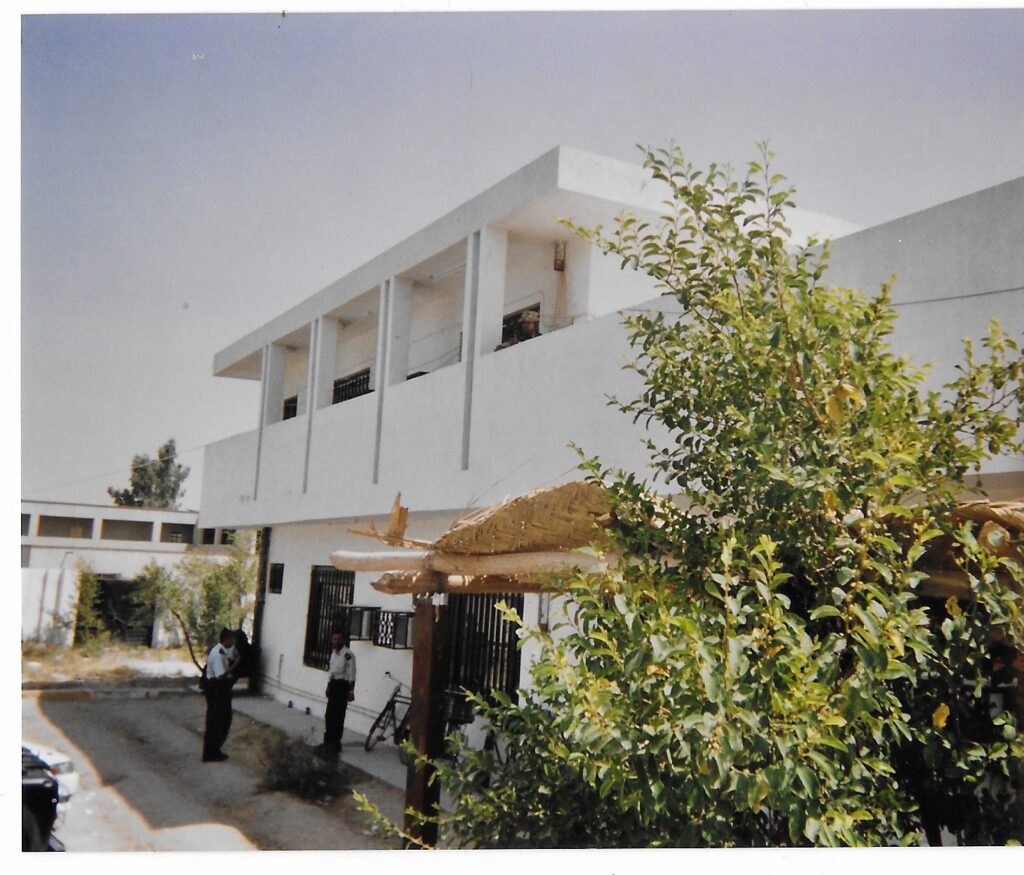
Accompanying LEGADs to Basra Court – July 2004. 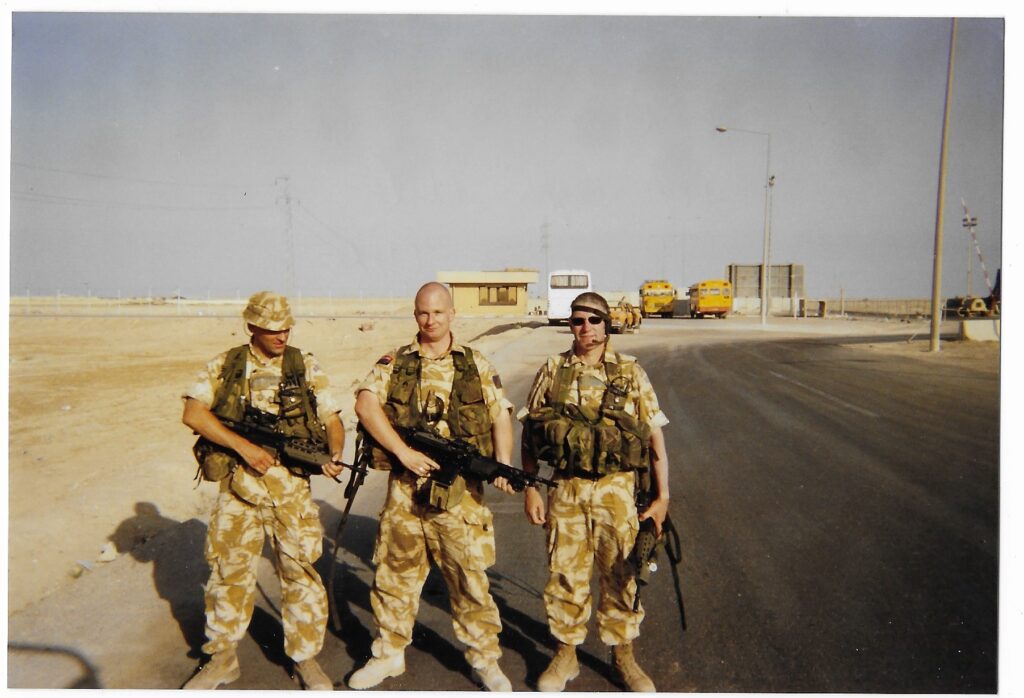
Outside PUCP Alpha, Basra Air Station. 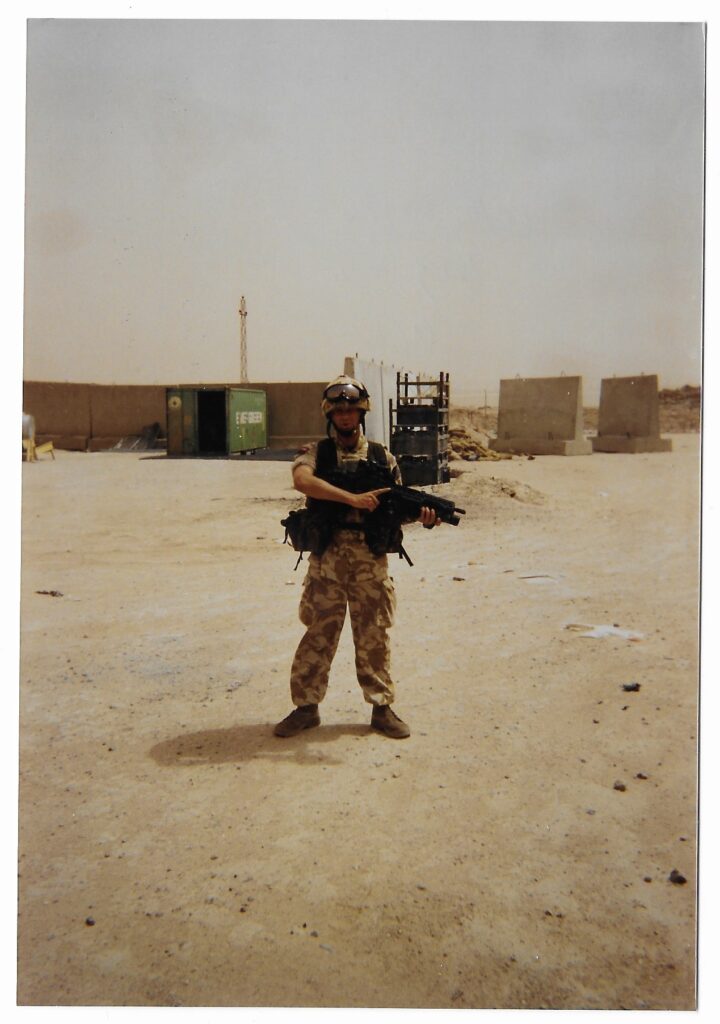
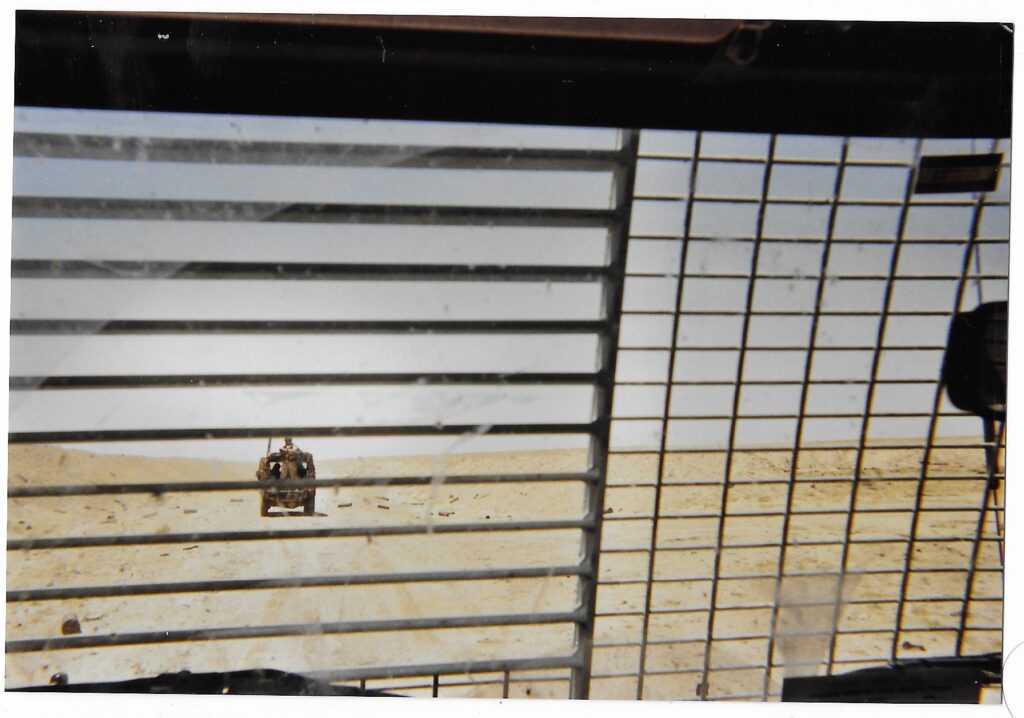
Patrol accompanying Intelligence Section disposing of UXO – July 2004. 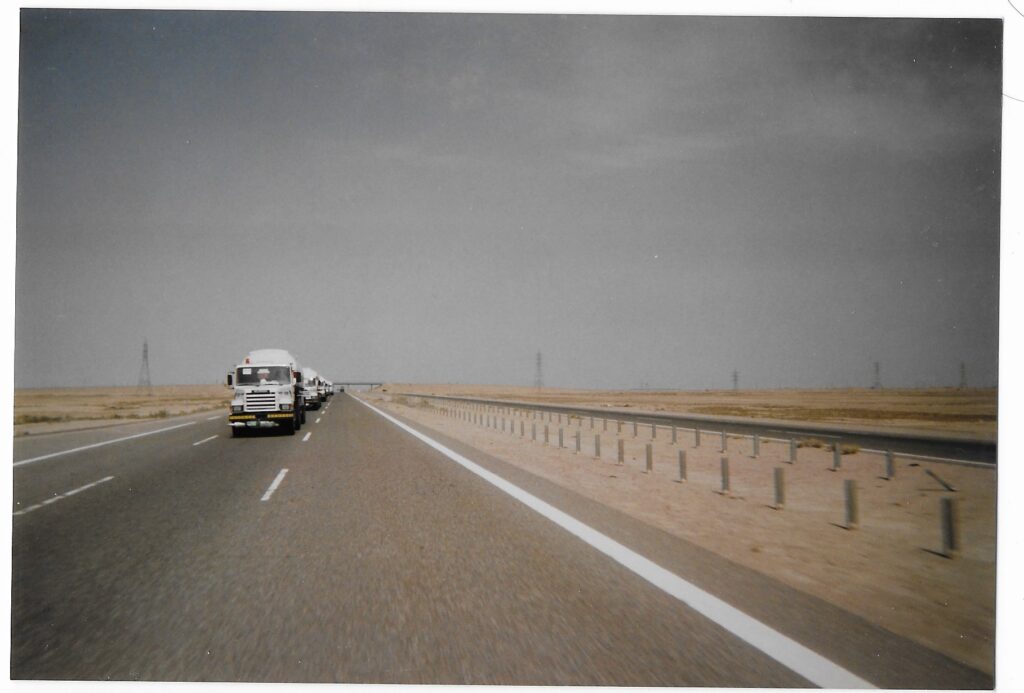
RAF Fuel Convoy. 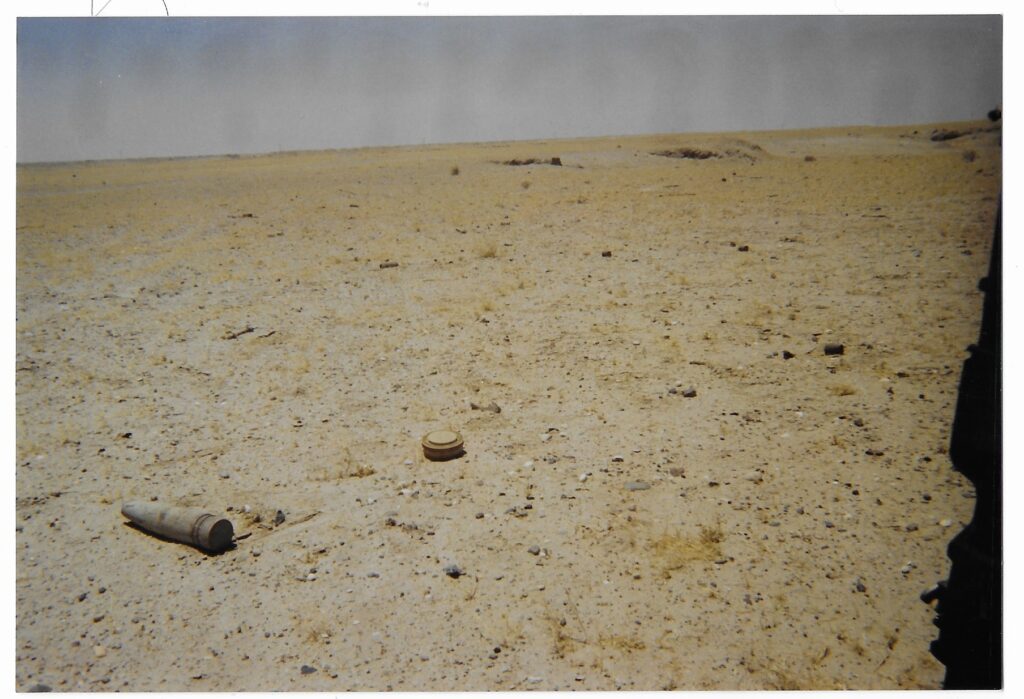
UXO – July 2004. 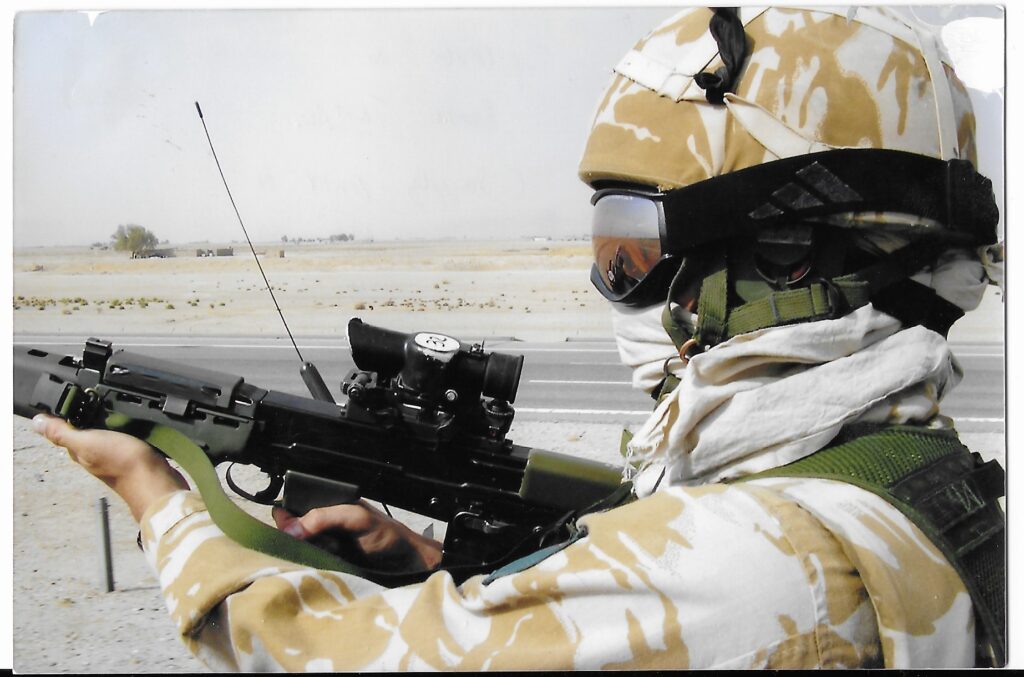
Supply Route to Kuwait – June 2004.
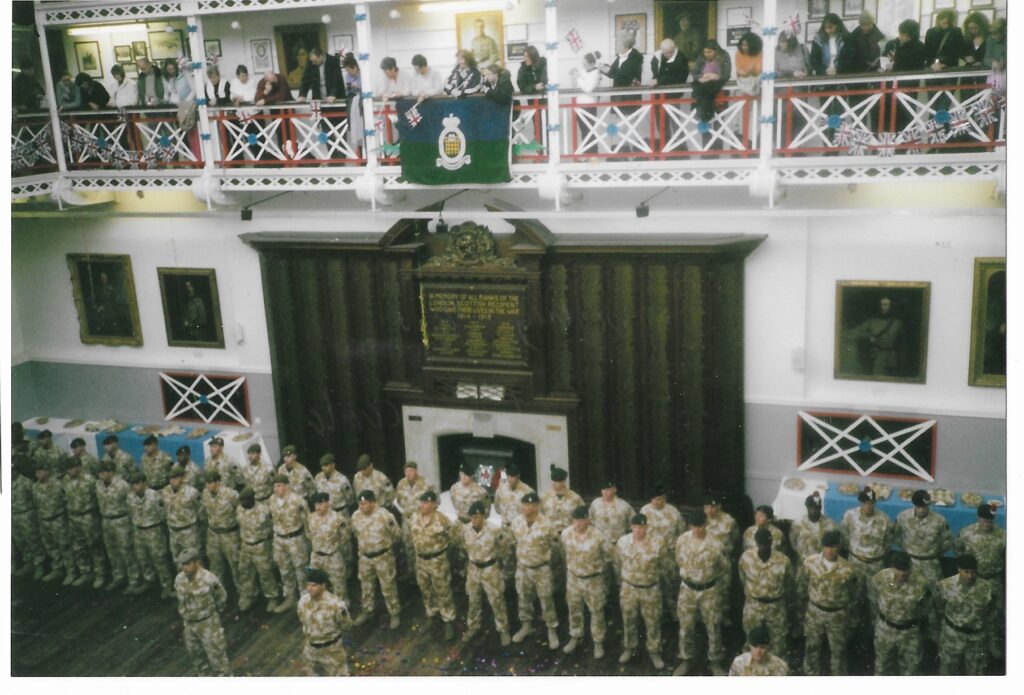
Lt Terry Flynn, 2 LIR in Italy
On Loos Sunday, we were delighted to meet with Sean Flynn, the son of Lieutenant Terry Flynn, who served with the 2nd Battalion London Irish Rifles during the Second World War. Although the details of Lt Flynn’s service period is not exactly clear, it is certain that he was serving with 2 LIR during its final advance through the Argenta Gap to the Po river in April 1945. He then went onto undertake peacekeeping duties with the battalion in Austria for the rest of 1945 and it seems that he may then have transferred to the 1st Battalion in 1946 when they were based in the Trieste area and completed his war time service with them in Italy.
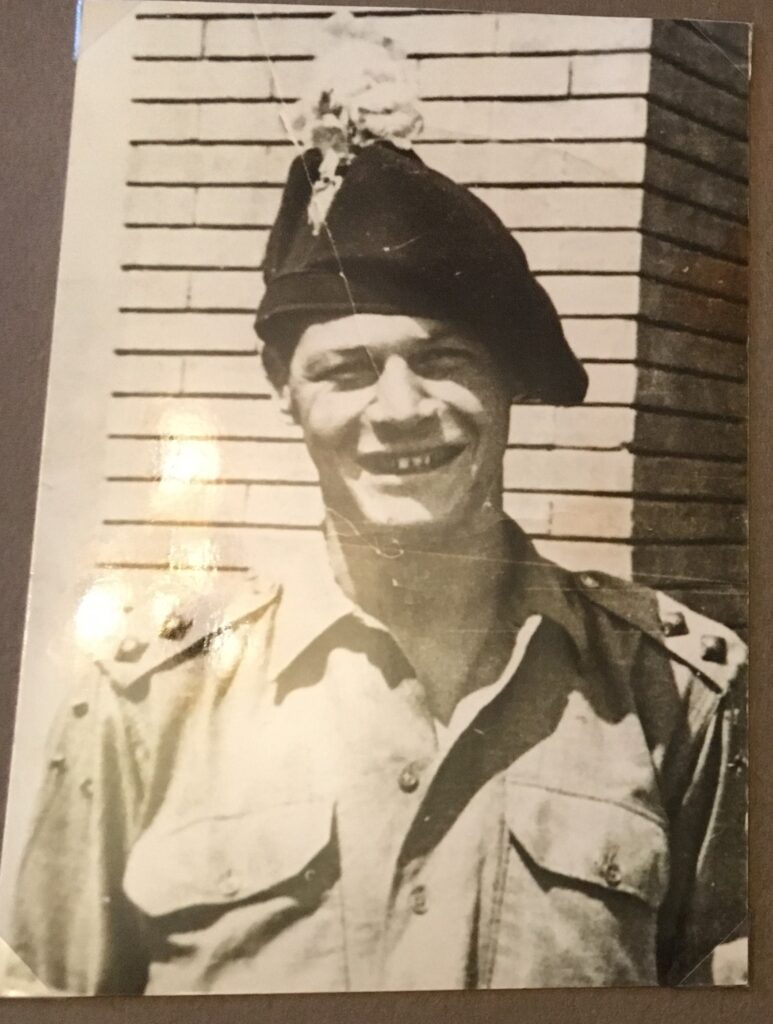
During his visit to Connaught House, Sean Flynn shared some photos of his father as well as providing additional details about his background with previous strong family connections with the armed forces. We were also delighted that the Flynn family wishes to donate a number of interesting artefacts and some boxing trophies that Terry had won during the period of military training in the UK.
Sean went onto tell us that his father was born in 1923 and, after the outbreak of war, initially served with the Royal Armoured Corps as a “tankie” in North Africa and Italy before transferring to the LIR. It is probable that he was commissioned into the Royal Ulster Rifles after serving with distinction with a tank regiment.
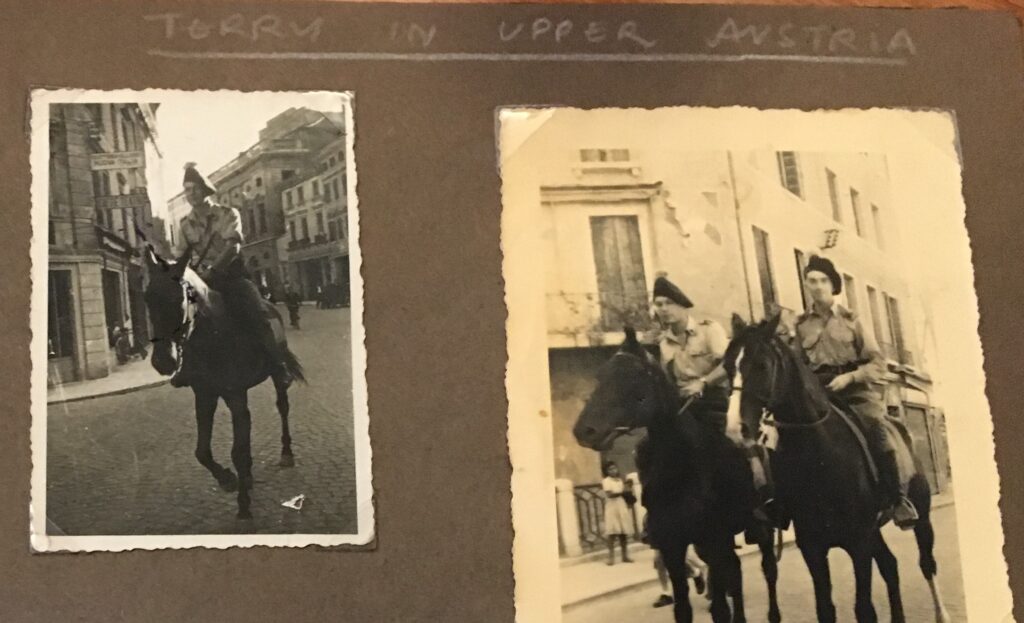
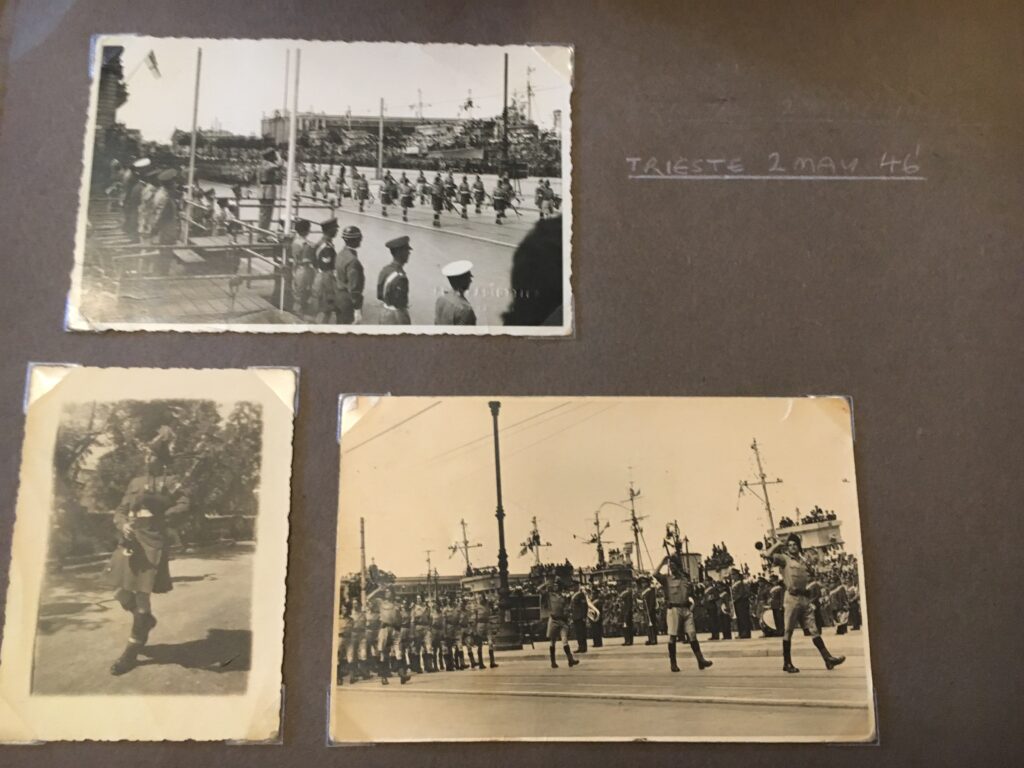
As often was the case, Terry Flynn didn’t share too much detail with his family after the war but he certainly was deeply affected by some of the events that he witnessed during the final advances in Italy. He died on 17th March 2002 – perhaps fittingly for an Irish soldier – and left a legacy of heroic memory. We hope to perhaps learn more about his army career over the coming months.
Many thanks to Sean Flynn for visiting us and sharing his father’s story.
Quis Separabit
Major Desmond Woods, 2 LIR
We were delighted to have been contacted recently by Adrian Woods, the son of Major Desmond Woods, who served with the 2nd Battalion as Officer Commanding of H Company from October 1943 to June 1944 until he was wounded in the fighting near Lake Trasimene in central Italy.
As well as his note to us, Adrian also passed over some additional extensive written details of his father’s service with the London Irish Rifles that had been transcribed from an interview by military historian, Richard Doherty – it’s a most remarkable story indeed and these details will be filed in the Museum’s archives.
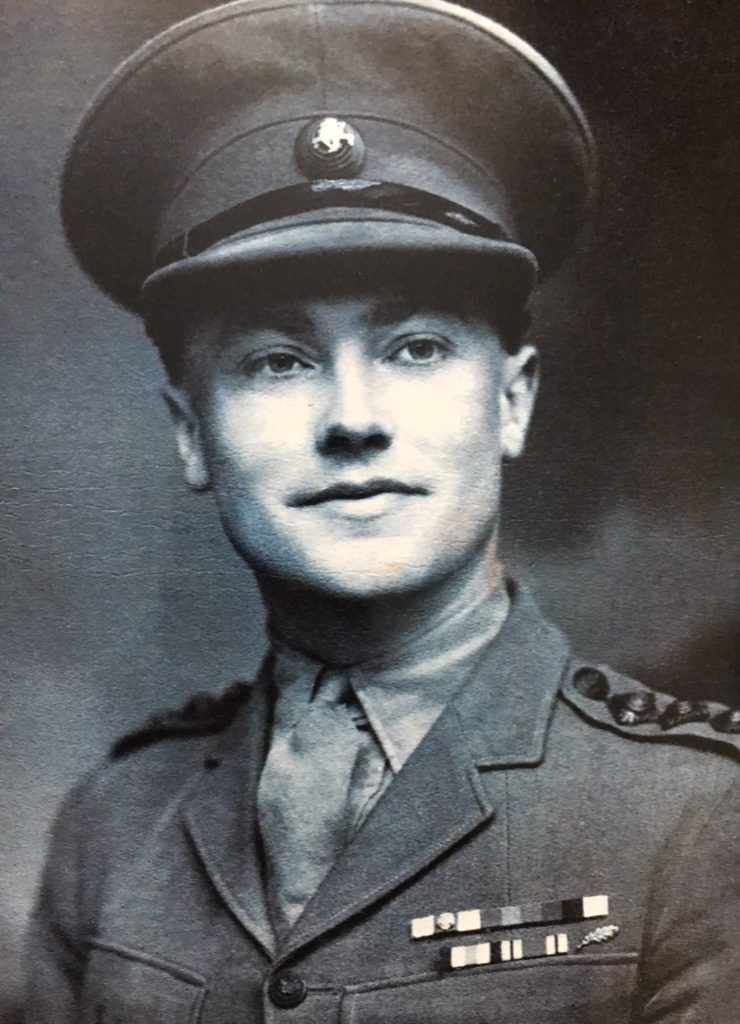
During his 8 months with the London Irish Rifles, Major Woods was present during some of the most momentous battle periods for the 2nd Battalion – at the Sangro river, near Monte Cassino and at Sanfatucchio to the west of Trasimene.
During the assault on Casa Sinagoga on 16th May 1944 , H Company formed the centre of the battalion’s advance which ultimately broke through the vaunted Gustav Line in the Liri Valley and it was here that Major Woods was awarded a bar to the Military Cross that he had received before the war – at the same time, he would unsuccessfully recommend Corporal Jimmy Barnes for a posthumous Victoria Cross for his part in that day of most bitter fighting for 2 LIR.
After being wounded and medically downgraded, Desmond Woods became a Training Major for the Italian Gruppi Cremona in northern Italy before undertaking a distinguished post war service overseas with the Royal Ulster Rifles and later with other units in Northern Ireland.
Quis Separabit.
The London Irish Rifles in Piedimonte
During the recent Association visit to Sicily, we were delighted to receive a copy of a new book outlining the story of Piedimonte Etneo during the Second World War written by our friend Dr Felice Vitale. The book, which has been privately published, relates the background to the events of August and September 1943 when British troops stayed in the town after the final liberation of the island.
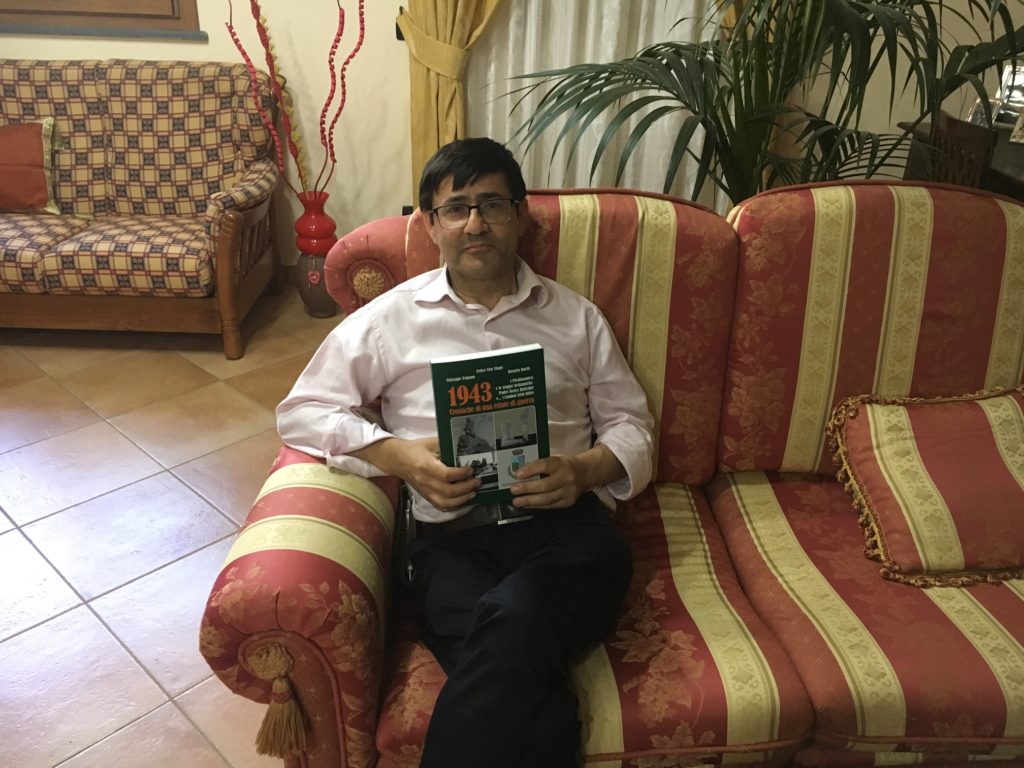
For the London Irish Rifles, in particular, it was a most memorable stay as the men, who had been engaged in very heavy fighting during July and August, were able to relax as well as commemorate the 28th anniversary of the Battle of Loos with a parade and service for the 1st Battalion who stayed in the town for five weeks. In fact, the war diaries state that “Piedimonte was the most confortable place the Battalion had stayed in since they left England”.
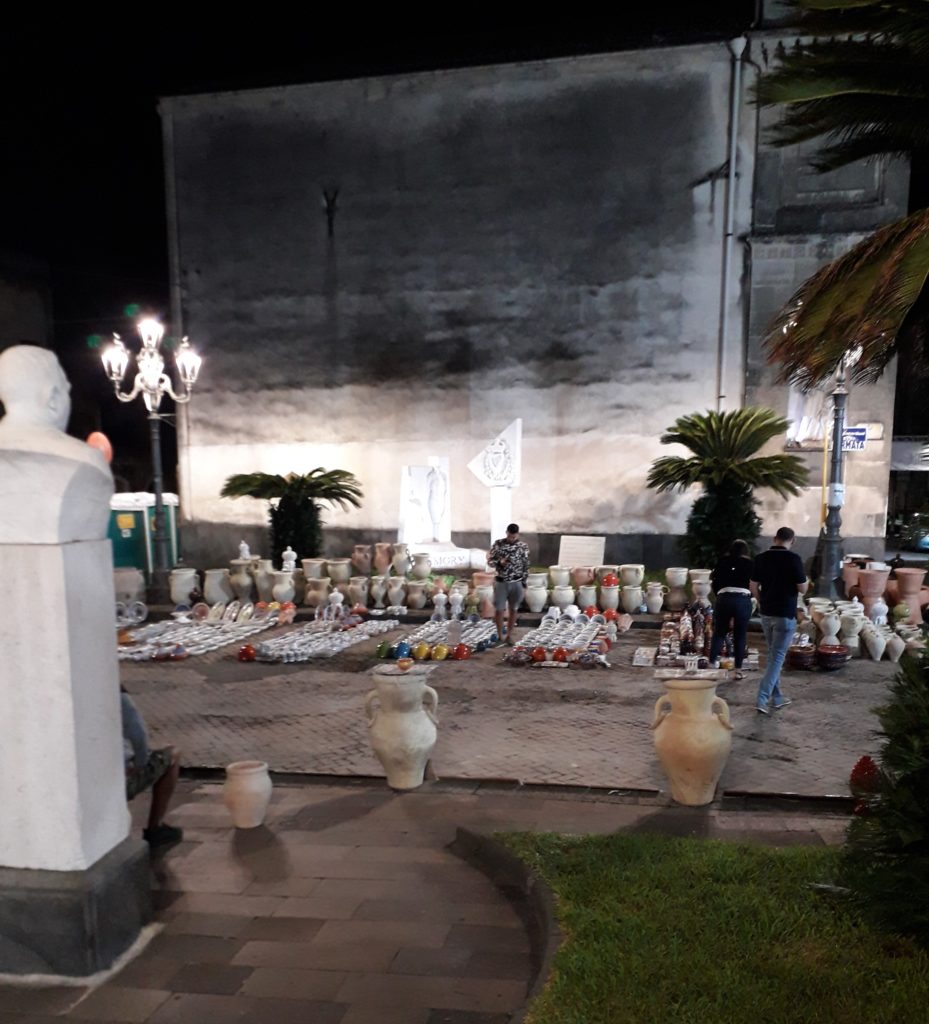
Felice’s own mother, Angelina, and his grand parents had witnessed the entry of the London Irish Rifles’ pipers into the town and this allowed him to gain a unique insight into the feelings of townspeople as they were being invaded by a large group of friendly Londoners with a very distinct Irish flavour.
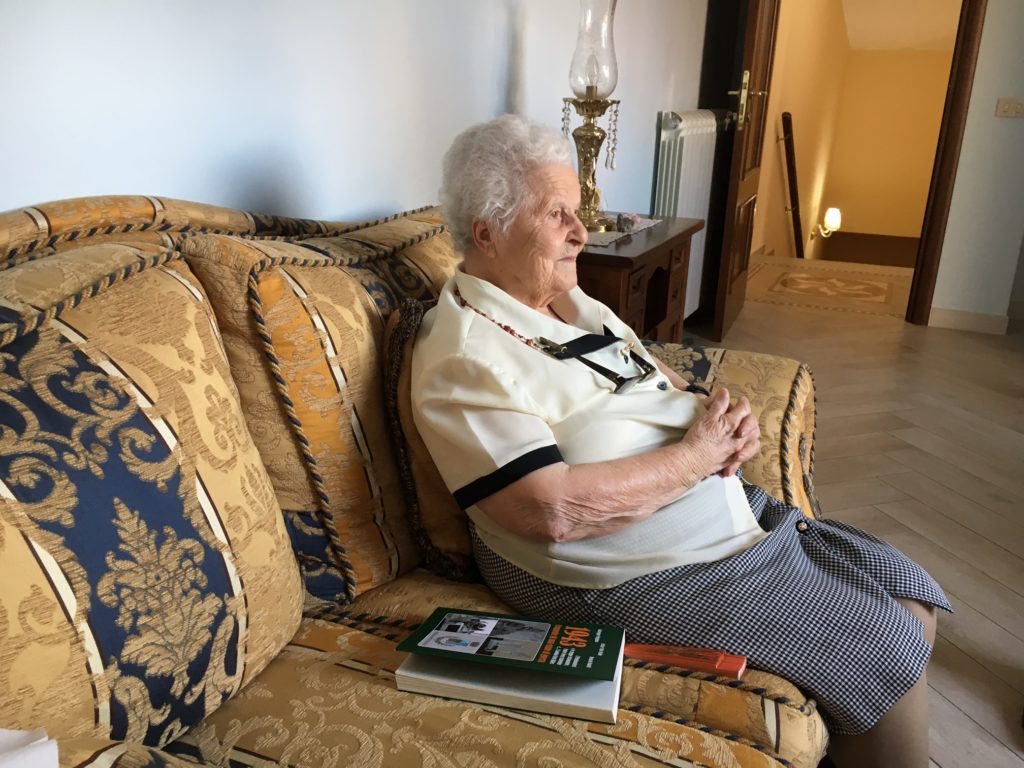
The book is currently only available in Italian and can be viewed in the Regimental Museum and we hope to add a translated version to the website at some future time.
Great work indeed.
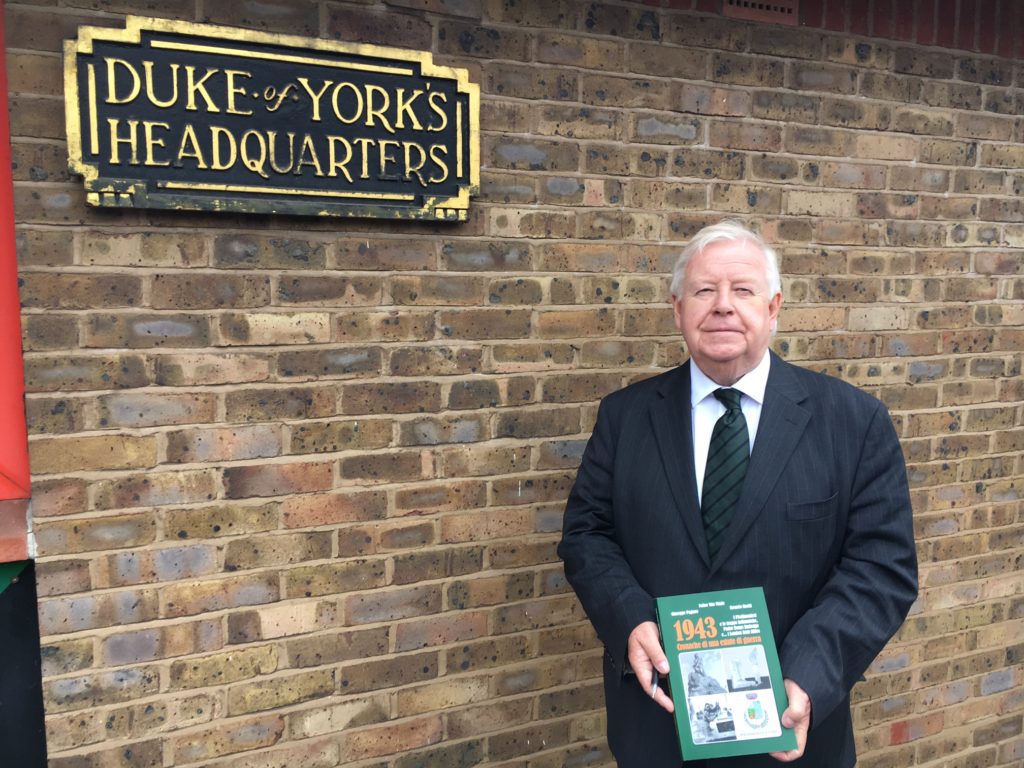
Grazie Mille.
Frederick Curnow
We’ve recently received a note from Kieran Saunders about his great uncle, Rifleman Frederick Curnow, who was killed in France during May 1916:
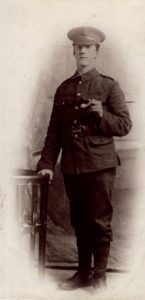
“My Great Uncle Frederick James Curnow was with the London Irish Rifles in the First World War and was killed in action on 11th May 1916, aged 21. I have attached a photo of him in uniform and also a group photo including other unknown comrades, he is standing second from left. I believe his body was not found and he is commemorated on the Arras Memorial.
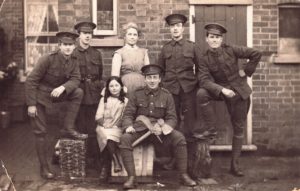
He was the eldest son of Frederick & Annie Curnow born 1895 in Chelsea, London and the family say his mother was so broken hearted that her son was killed that she died just 9 months later.”

Quis Separabit.
Lance Corporal John Gregory DCM
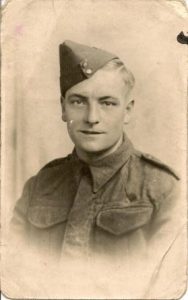
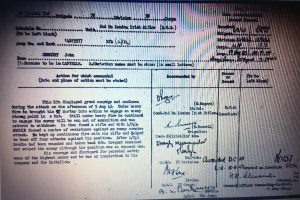
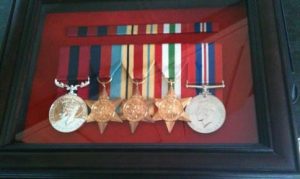
In March 1944, Jack returned to the UK as a result of the news that Joyce was suffering from tuberculosis and he was temporarily relegated to W(T) status and joined the reserves before being permanently given this status. Joyce and Jack went on to have two further children, the youngest born in 1953, and he would continue in the building trade, eventually taking over his father’s business and would lead a very busy life, being an especially keen sportsman. Jack passed away on 8th March 2012, a few months before his 90th birthday.
Glenn concluded his note:
“My father-in-law spoke little about the war, just on the odd occasion – he was a quiet man who considered myself nothing special. We know better.”
We do indeed sir.
Quis Separabit.

Memorial Plaque Unveiling in Piedimonte Etneo.
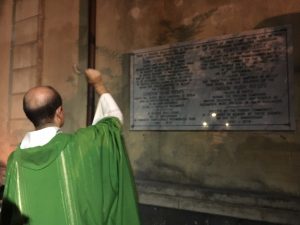
The Regimental Association was honoured to attend a Commemorative event in the town of Piedimonte Etneo on the north eastern slopes of Mt Etna that took place on the exact 75th anniversary of the date when men of the 1st Battalion, London Irish Rifles entered the town in early September 1943.
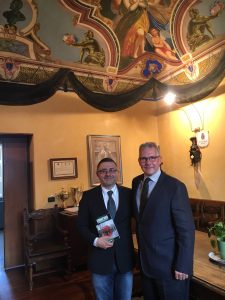
The Chairman, Major Peter Lough, and Association Members, Richard and Edmund O’Sullivan, whose father served with the 2nd Battalion in Sicily, attended a Service of Remembrance at the town’s Chiesa Madre before a marble plaque was blessed by the parish priest, Dom Mario, outside the church. The plaque honours the memory of the 90 members of London Irish Rifles and numerous Sicilians civilians who died during the fighting on the island.
The 1st Battalion London Irish Rifles would stay in Piedimonte for over a month from 8th September to 10th October 1943 when they en-shipped for Naples. A witness to the events of 1943, Angelina Vitale, was on hand to tell us of the day when she and her family welcomed the London Irish into her home town as liberators and garlanded them with flowers.
It is really quite remarkable, that in a small town in Sicily, there are now two memorials dedicated to the men of the London Irish Rifles – entirely funded by the local townspeople.
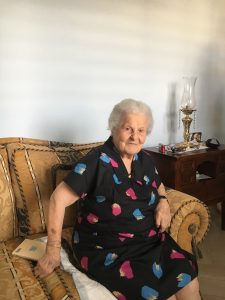
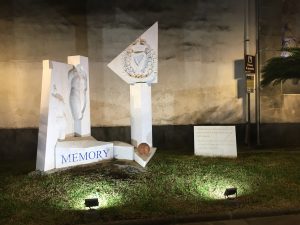
Thanks are due to Dom Mario, Mayor Ignazio Puglisi, Deputy Mayor Giuseppe Pagano, the President and Members of the Town Council and all the townspeople of Piedimonte Etneo for their fantastic welcome again.
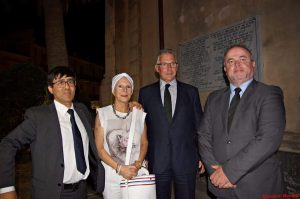
The Association Chairman’s speech is reproduced in full below:
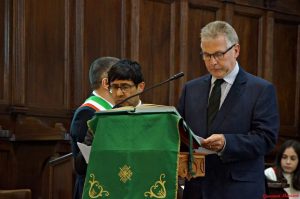
I am delighted to visit your lovely town again. This is my third visit here to Piedimonte and I would like to thank you all for your usual most hospitable welcome. Today’s commemorative event is a truly remarkable one for our Regimental Association.
As you know, 75 years ago this week, the 1st Battalion of the London Irish Rifles arrived in this town after a very difficult period when they were embattled on the east coast of Sicily during July and early August of 1943. On 8th September 1943, the men of the London Irish Rifles moved from the coastal area near Fiumefreddo to the cooler climes of this town. It was a very welcome move and it is perhaps not surprising that our Regimental history stated that: “Piedimonte was the most comfortable place that the Battalion had stayed at since leaving England in August 1942…” Some of you will remember that day when London Irish Riflemen, wearing what some of you thought were “orange skirts”, entered the town – I can certainly see Angelina, who did indeed witness those historic events.
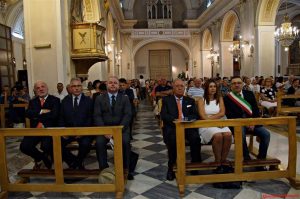
Two weeks after the London Irish Rifles arrived, a Parade and Service of Remembrance would be held here in the town to commemorate one of our Regiment’s most famous battles during the Great War: the Battle of Loos that took place in northern France. The Commanding Officer of the 1st Battalion London Irish Rifles, Lt-Colonel Ian Good, addressed the parade in Piedimonte that day.
Our Regimental records noted that after the parade:
“the Battalion marched to their respective services, both Roman Catholic and Anglican, which were held for the remembrance of men of the Battalion who fell in the battle of Loos and for those who fell in the fighting in Sicily.” One of the services, held here at this church at that time, was conducted by Father Denys Rutledge, along with our own battalion’s padre, Father Treacy.
At this point, I would like to reflect on the memories of those desperately difficult days in September 1943. Both the Riflemen and the people of Sicily had suffered so much over the previous months, and it was quite fantastic that they could all come together in fraternal friendship during the 5 weeks that the town of Piedimonte hosted their visitors.
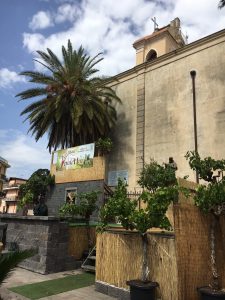
I am sure that the moments of deep prayer and solemn contemplation and reflection were directed to both the military combatants of all countries and the civilians of Sicily, who were sadly caught up in the fighting on the island. I am equally sure that the events of the day would have been of great spiritual comfort to everyone and would indeed have contributed greatly towards a continuing period of close mutual friendship in the town until the London Irish reluctantly left Piedimonte on 10th October.
As I say, 25th September 1943 was a most important day of reflective contemplation that has been mirrored at the Service of Remembrance here today. It is a most remarkable thing that I can now look out across to your own War Memorial marking the sacrifices of the Great War, the Memorial that is dedicated to men of the London Irish Rifles and can also stand close to the Commemorative Plaque.
I cannot thank you enough for such an incredibly generous and moving occasion that will further underpin the deep friendship between the London Irish Rifles Association and the people of Piedimonte Etneo, both today and far into the future.”
The 38th (Irish) Brigade in the Second World War
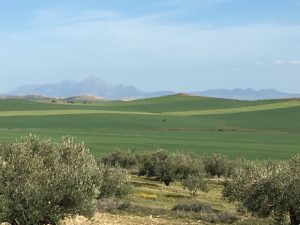 To mark the 75th anniversaries of the London Irish Rifles’ remarkable fighting role during the Second World War, Association members, Richard and Edmund O’Sullivan, have commenced a project to film the route that their father, CQMS Edmund (“Rosie”) O’Sullivan followed with the 2nd Battalion London Irish Rifles all the way from Algiers to Austria. The filming schedule will comprise several parts and Part 1, which covers the Tunisian campaign, is available online, with further filming taking place in Sicily and across mainland Italy over the next two years.
To mark the 75th anniversaries of the London Irish Rifles’ remarkable fighting role during the Second World War, Association members, Richard and Edmund O’Sullivan, have commenced a project to film the route that their father, CQMS Edmund (“Rosie”) O’Sullivan followed with the 2nd Battalion London Irish Rifles all the way from Algiers to Austria. The filming schedule will comprise several parts and Part 1, which covers the Tunisian campaign, is available online, with further filming taking place in Sicily and across mainland Italy over the next two years.
In October 1941, Winston Churchill had sent the following memorandum to the Secretary of State for War: “I shall be glad to have an expression from the War Office on this suggestion. We have Free French and Vichy French so why not Loyal Irish and Dublin Irish.”
Such a formation, 38 (Irish) Brigade, was indeed created during January 1942 in line with Churchill’s wishes and comprised three infantry battalions: the 1st Bn Royal Irish Fusiliers, the 6 Bn Royal Inniskilling Fusiliers and the 2nd Bn London Irish Rifles and it would leave the UK in November 1942 as part of the follow up force to exploit the initial Allied landings (‘Torch’) in North Africa. The brigade would gain an unrivalled reputation for battlefield excellence from the time that they arrived in Tunisia in December 1942 until they spearheaded the advance through the Argenta Gap that led to final victory in Italy at the end of April 1945.
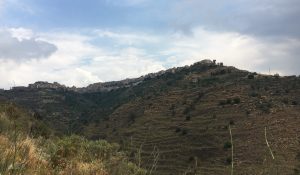 Along with the rest of 78th (Battleaxe) Division, 38 (Irish) Brigade would often be called forward to break the most stubborn parts of the German defensive lines and would suffer thousands of casualties many of whom are buried at various CWGC Cemeteries in North Africa and Italy. It is a truly remarkable story and one which we look forward to sharing with you over the next two years.
Along with the rest of 78th (Battleaxe) Division, 38 (Irish) Brigade would often be called forward to break the most stubborn parts of the German defensive lines and would suffer thousands of casualties many of whom are buried at various CWGC Cemeteries in North Africa and Italy. It is a truly remarkable story and one which we look forward to sharing with you over the next two years.
Faugh a Ballagh
Nec Aspera Terrent
Quis Separabit.
Part 1 can be viewed here.
Part 2.
